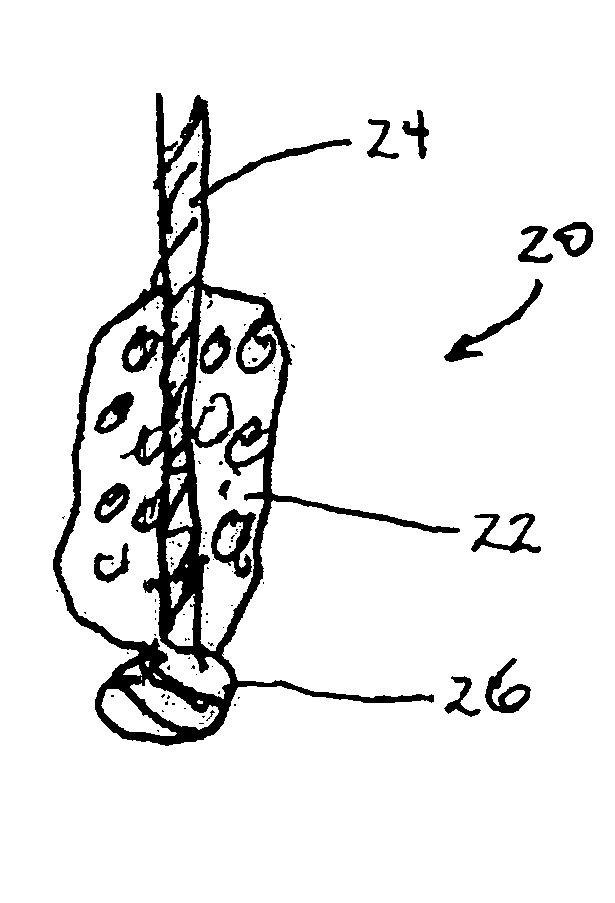Vascular plug having composite construction
a technology of vascular plugs and composites, which is applied in the field of vascular plugs having composite construction, can solve the problems of time-consuming and expensive procedures, requiring as much as an hour of physician's or nurse's time, and uncomfortable for patients, so as to reduce the likelihood of leaking, increase the effective radial dimension of the sealing member, and facilitate the delivery of the sealing member
- Summary
- Abstract
- Description
- Claims
- Application Information
AI Technical Summary
Benefits of technology
Problems solved by technology
Method used
Image
Examples
Embodiment Construction
[0055]FIGS. 1A and 1B are rudimentary illustrations of a vascular sealing device in accordance with the present invention. The device 20 includes a sealing member 22 retained on a tether 24. The sealing member 22 is preferably retained on the tether 24 at or near its distal end point by a stop member 26 formed at the distal end of the tether 24. The stop member 26 is preferably a knot formed at the distal end of the tether 24. FIG. 1A shows the device in its unexpanded, predeployment state. FIG. 1B shows the device after it has expanded due to fluid exposure.
[0056] The sealing member 22 is formed from a material that is able to expand, or to be expanded, once the sealing device 22 is deployed for use. The sealing member is preferably formed from a bioabsorbable material, but, in several alternative embodiments, the sealing member may be formed from a non-bioabsorbable material. Examples of suitable bioabsorbable materials include bioabsorbable collagen, polyglycolic acids (PGAs), p...
PUM
 Login to View More
Login to View More Abstract
Description
Claims
Application Information
 Login to View More
Login to View More - R&D
- Intellectual Property
- Life Sciences
- Materials
- Tech Scout
- Unparalleled Data Quality
- Higher Quality Content
- 60% Fewer Hallucinations
Browse by: Latest US Patents, China's latest patents, Technical Efficacy Thesaurus, Application Domain, Technology Topic, Popular Technical Reports.
© 2025 PatSnap. All rights reserved.Legal|Privacy policy|Modern Slavery Act Transparency Statement|Sitemap|About US| Contact US: help@patsnap.com



